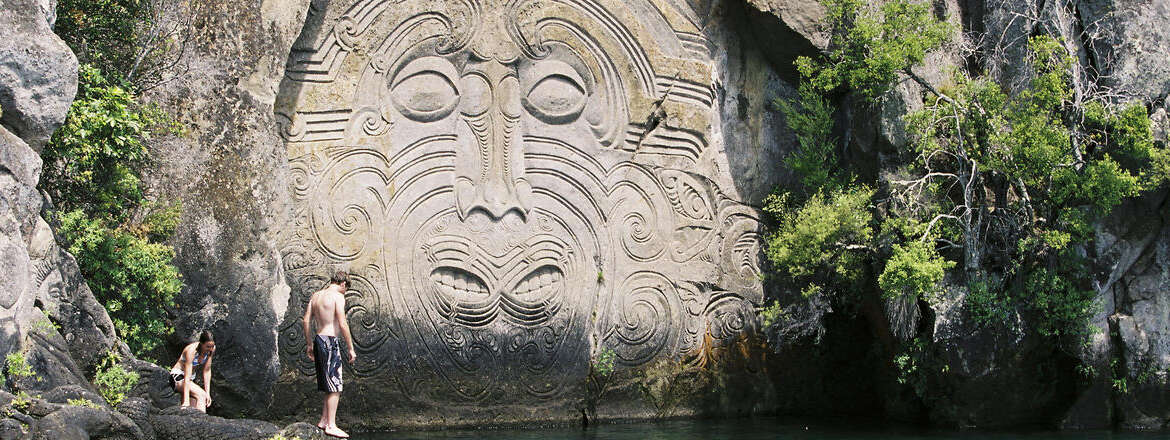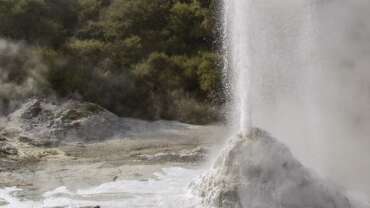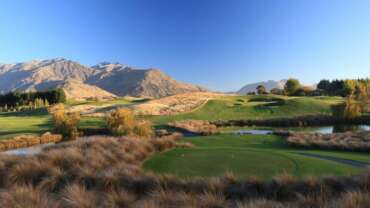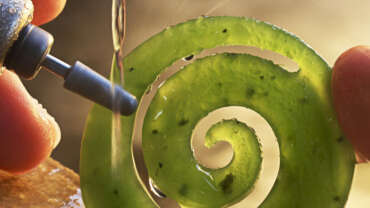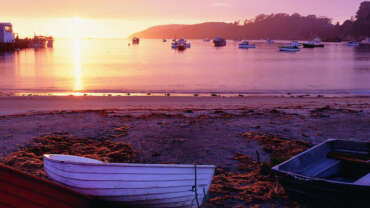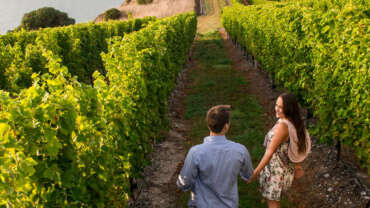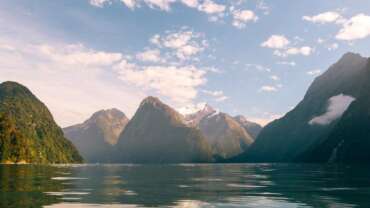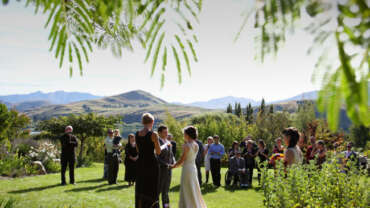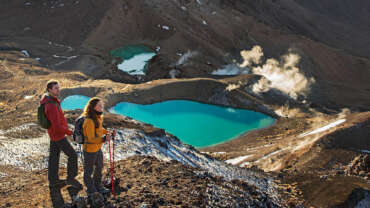Maori Culture in New Zealand
Māori culture is an integral part of life in New Zealand, influencing everything from cuisine to customs, and language. Māori are the tangata whenua, the indigenous people, of New Zealand. They came here more than 1000 years ago from their mythical Polynesian homeland of Hawaiki. Today, one in seven New Zealanders identify as Māori. Their history, language and traditions are central to New Zealand’s identity.
Experience Māori culture by visiting a marae, watching a carving or weaving demonstration or learning about fascinating myths and legends from passionate Māori guides.
In 1840, New Zealand’s founding constitutional document, the Treaty of Waitangi, was signed by both Māori Chiefs and representatives of the British crown.
After the treaty was signed, the British population quickly grew larger than the Māori population. For more than a century after the signing of the Treaty, Pākehā culture was dominant in New Zealand. Māori were expected to adapt to Pākehā culture.
It wasn’t until the 1980s that Māori culture started to undergo a renaissance. Since then, there has been a renewed focus on biculturalism, which is based on the partnership established between Māori and the Crown by the Treaty of Waitangi.
Māori culture in everyday life
Māori culture plays a role in everyday life in New Zealand. As an official language, it’s common to hear Te Reo Māori spoken, and many official place names are in Māori. You can easily learn the correct pronunciation of place names, plus some simple Māori words and phrases, such as kia ora and other greetings.
Tikanga, or Māori customs, are also important in daily life. Manaakitanga is all about welcoming guests and providing great hospitality, something which all Kiwis pride themselves on.
Kaitiakitanga embodies the sense of respect and guardianship Māori feel toward the natural world. This philosophy is central to the love and care many New Zealanders have for the environment. We ask all visitors to New Zealand to make the Tiaki Promise, which captures this respect for our precious natural resources.
Learn about Māori culture and traditions
The best place to observe Māori culture is on a marae, which is a sacred communal meeting space. In regions such as Northland, Auckland or Rotorua, you can visit a marae to experience a traditional Māori welcome. During a marae visit, you’ll also hear Māori speeches and singing, see carved meeting houses, greet the locals with a hongi (pressing of the noses) and enjoy a hāngī feast cooked in earth ovens.
Performing arts or kapa haka, which incorporate harmonious singing, rhythmic dancing, and Māori dances such as the haka, are a must-see for any visitor. Many marae visits and Māori cultural tours include a kapa haka performance, with the most renowned place for these shows being Rotorua in the North Island.
Māori culture and values shape the everyday life of people in New Zealand.
Transport yourself on a journey of discovery, from past to present, with these 10 unique Māori cultural experiences.
TOP 10 MĀORI CULTURAL EXPERIENCES
1. Explore the Waipoua Forest
Standing tall and proud in the Waipoua Forest you can find Tane Mahuta, New Zealand’s tallest native kauri tree. Embark on an intimate tour with Footprints Waipoua. Discover the ancient kauri forest with local Māori storytellers who will guide you at twilight, so you can witness the stillness of the forest as it transforms from day into night. Learn how the forest plays an important role in the lives of local Māori and the eco-system. Listen carefully for the sounds of wildlife, including kiwis and morepork.
2. Walk in the footsteps of great ancestor, Kupe
Manea, on the shores of the Hokianga Harbour, shares the stories and traditions of the great ancestor, Kupe. Experience a 75-minute multisensory journey of guided storytelling – through large scale artworks, film, performance, digital interaction, and the spectacular Hokianga environment.
3. Learn about the Treaty of Waitangi
The Treaty of Waitangi is an important piece of New Zealand’s history. In Northland, take the guided tour through the Waitangi Treaty Grounds, explore the heritage buildings and get up close to the historic war canoe. You could spend all day in the museum alone so take advantage of the Waitangi Experience Pass which gives you entry to all areas for two consecutive days.
4. Enter a house that travelled for 117 years
Built and carved as a tribute to ancestors, this majestic meeting house was completed in 1875 in Whakatāne(opens in new window). Said to be fit for a queen, the building was disassembled in 1879 and shipped to the United Kingdom, in 1996 Mataatua was finally returned home. Take a tour of Mataatua(opens in new window) to discover where it travelled and find answers to your cultural questions.
5. Be the first in the world to see the sunrise
In ancient Māori myths and legends, when demigod Māui fished up the North Island, it’s believed that Maunga Hikurangi was the first piece of land to emerge from the sea. As one of the easternmost locations in New Zealand, found 90 kilometres north of Gisborne in the Tairāwhiti region(opens in new window), this mountain is one of the first places in the world to see the sunrise.
6. See master carvers at work
In Rotorua, you will find Te Puia and the Whakarewarewa Geothermal Valley. Te Puia is not only a place to see the largest active geyser in the Southern Hemisphere and bubbling mud pools, but a place where Māori arts are kept alive and taught at the New Zealand Māori Art and Crafts Institute. Visiting Te Puia gives you the opportunity to see talented carvers at work, turning pieces of wood into intricately detailed art.
7. Experience a traditional Māori village
15km south of Rotorua is Tamaki Māori Village, a recreated traditional village under the shelter of an ancient 200 year old native Tawa forest. Discover what life was like for the Māori people pre-European contact. Honoured traditions, food, stories, songs and performing arts of old remain prevalent to Māori today.
8. Kayak beneath a huge stone carving
Get up close to the significant carving of a historic Māori navigator, named Ngatoroirangi. Taupō Kayaking Adventures offers half and full-day tours to Mine Bay where you’ll paddle through inlets and sheltered areas before visiting the carving. These relaxed tours allow time for swimming in the secluded areas of New Zealand’s largest lake, Taupō.
9. Learn to paddle a Māori canoe
On the waterfront of the coolest little capital, you’ll find Te Wharewaka o Pōneke tours. Discover Wellington’s hidden treasures, learn more about the early arrivals and view archaeological remains not accessible to the general public. If you’ve ever wanted to learn how to paddle a traditional Māori waka (canoe) join the waka tour. Once you’ve worked up an appetite head next door to Karaka Cafe for a hearty hāngi (traditional meal).
10. Carve your own pounamu (greenstone)
Sourced from riverbeds on the South Island, pounamu is New Zealand’s sacred treasure. In the small West Coast town of Hokitika, under the watchful eyes of talented master carvers at Bonz ‘n’ Stonz, see your creativity come alive as you design then carve your own unique piece of pounamu, bone, or paua shell to take home.



